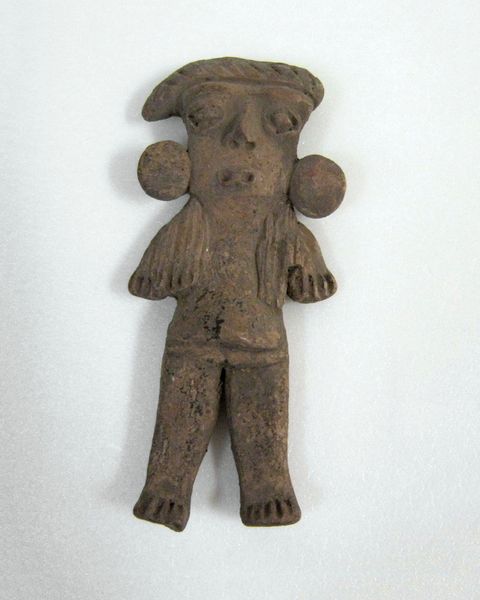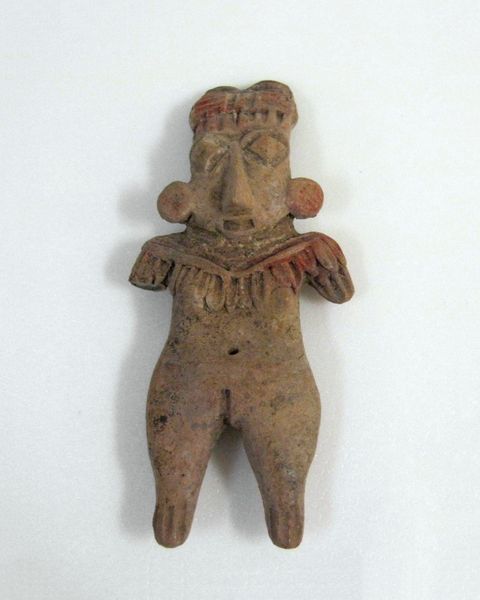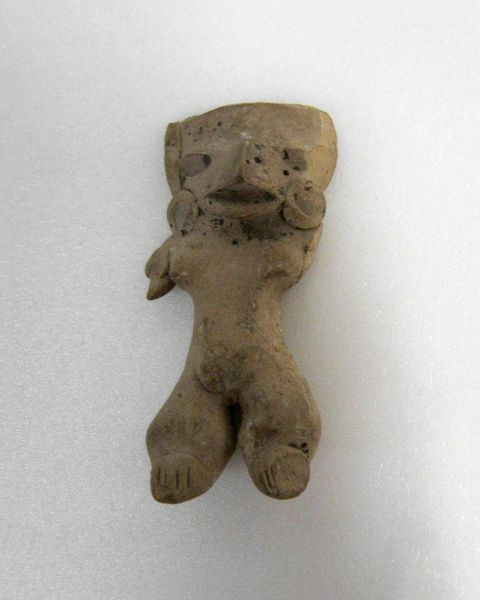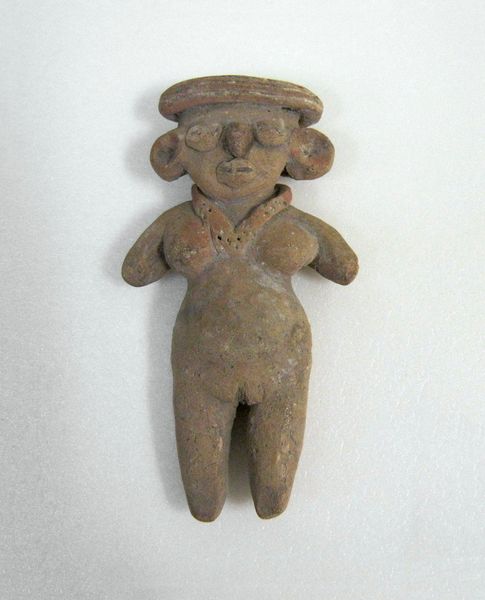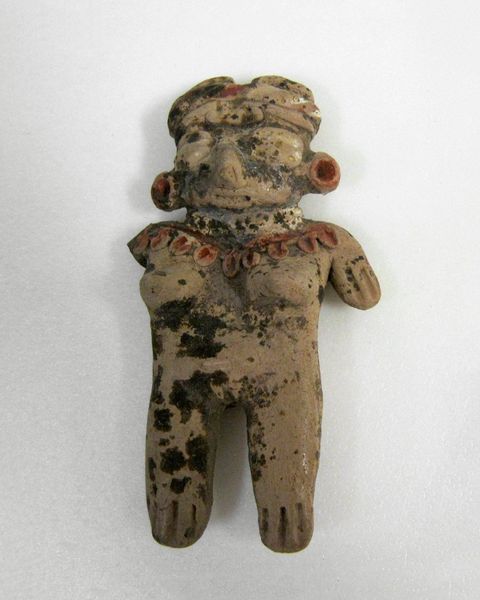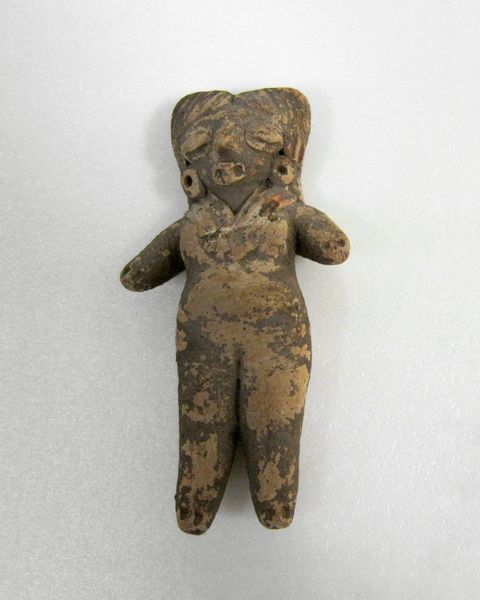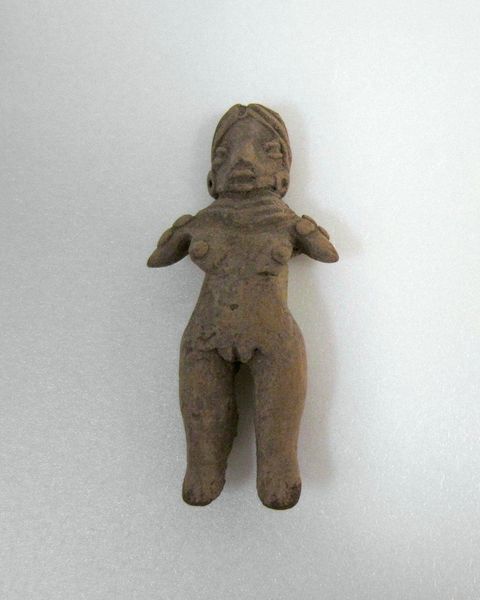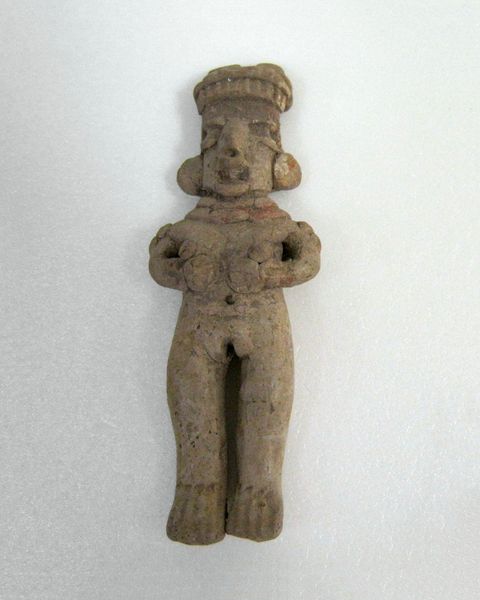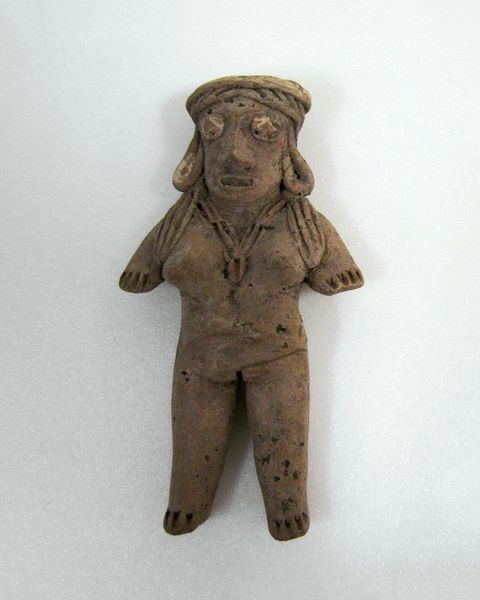
ceramic, earthenware, sculpture, terracotta
#
sculpture
#
ceramic
#
figuration
#
earthenware
#
sculpture
#
terracotta
#
indigenous-americas
Dimensions: 3 7/8 x 1 5/8 x 3/4 in. (9.8 x 4.1 x 1.9 cm)
Copyright: Public Domain
Curator: Look at this captivating figure! The Minneapolis Institute of Art holds this "Standing female figure" in its collection. It is Chupícuaro earthenware, dating roughly from 250 to 400 AD. Editor: She looks fragile, both in her making and in her current state with the broken leg, which lends a sense of melancholy to her small presence. Curator: Exactly! Though small, the figurine represents a continuation of Indigenous cultural memory in the Americas. Consider the care with which the eyes and ears are sculpted—perhaps she represents an ancestor or deity, holding a deep spiritual significance. The earrings and layered neckpiece suggest ornamentation and possibly status. Editor: It’s incredible how the makers transformed basic clay into this lasting object. What kind of labor would have gone into forming, firing, and possibly painting her? Did artisans specialize in these objects, or was it a more communal effort connected to domestic work? Curator: Those are excellent points. Think of the skills and knowledge accumulated and passed down generations! The materials—clay and pigments—themselves were not neutral, but carried meaning and significance rooted in place. Editor: This single leg's break changes our sense of value; one wonders how many intact figurines have been lost or destroyed, which speaks to what society deemed worthy of saving and what it didn't. Curator: Indeed. I am captivated by the way a small figure made of earth can speak to the complexities of ancient culture and beliefs, connecting us to the intimate details of lives lived centuries ago. Editor: Thinking about her form and the material—this earthen figure, vulnerable yet enduring—reminds us of the cycles of creation, destruction, and transformation. The artist shaped mud, in a way enacting what it means to come from the land.
Comments
No comments
Be the first to comment and join the conversation on the ultimate creative platform.
